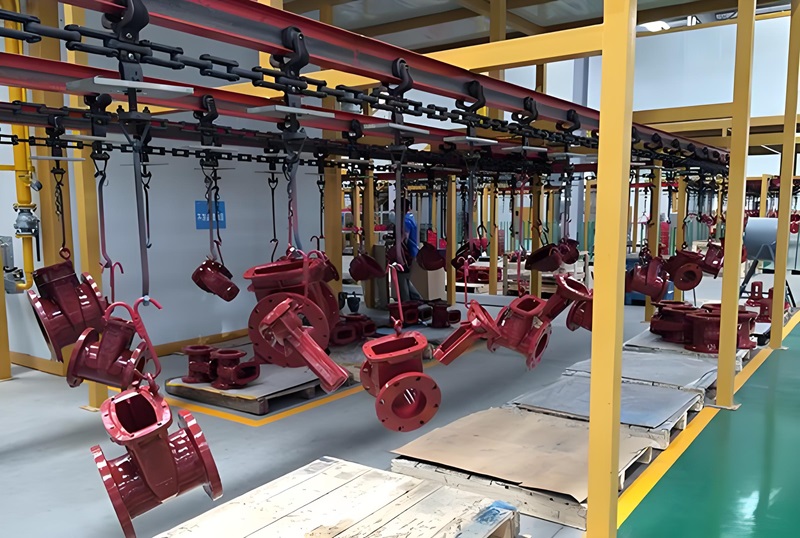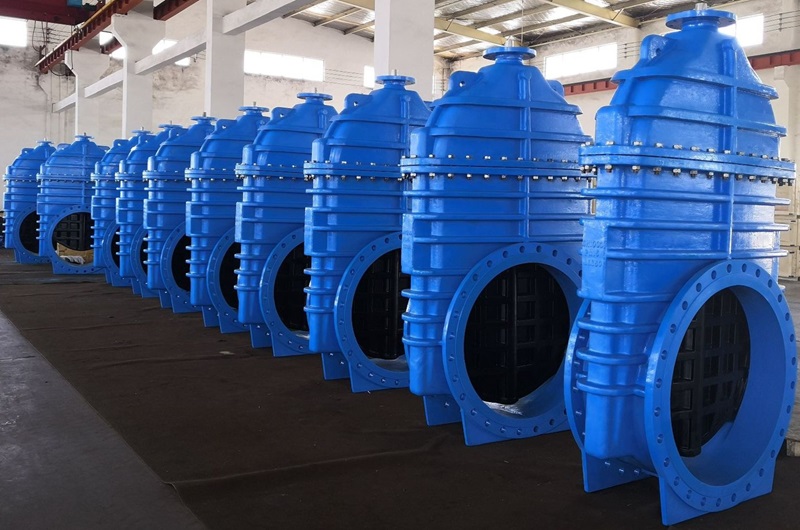Categories
- Tech & News (16)
- Pipes & Fittings (12)
- Valves & Pumps (48)
- Equipment & Tools (6)
- Facilities & Chemicals (10)
AWWA C515 resilient seated gate valves are usually furnished with fusion bonded epoxy (FBE) coating in accordance with AWWA C550 to meet the requirements of water supply service. These reduced-wall gate valves shall be made from ductile iron, either with rising or non-rising stem. AWWA C550 specifies protective interior & exterior coatings for valves used for water supply, wastewater collection and treatment, and reclaimed water service having a PH range from 4 to 9. It covers materials, application processes, performance criteria, and various tests for both liquid and powder epoxy coatings, ensuring long-term corrosion resistance and durability.

The FBE coating line for various ductile iron valves in our factory.
Fusion bonded epoxy (FBE) coating is commonly applied to both the interior and exterior surfaces of AWWA C515 resilient seated gate valves to provide robust protection against corrosion and chemical exposure. The FBE coating process involves applying a dry epoxy powder electrostatically to the heated valve surface, which then melts and cures to form a hard, continuous, and adherent coating. This coating is known for its excellent adhesion, resistance to impact and abrasion, and long-term durability, making it suitable for harsh environments in water and wastewater systems.

Large diameter AWWA C515 NRS resilient seated gate valves with FBE coating: 36″ 250 psi RF flanged, bare stem for electric actuators.
Fusion bonded epoxy (FBE) coatings for ductile iron gate valves conforming to AWWA C515 are typically available in several standard colors, with red and blue being the most common. These coatings are applied to both the interior and exterior surfaces of the valves to provide excellent corrosion resistance and durability. Red is often used for fire protection applications, while blue is commonly used for potable water systems. The specific color can vary depending on the application and purchaser requirements. According to AWWA C550, the FBE coating shall be done in accordance with ASTM D2794, ASTM G62, and NSF/ ANSI 61. Rigorous inspection and tests shall be conducted to ensure the coating quality: immersion tests, direct impact test, visual examination, coating thickness inspection, holiday testing.